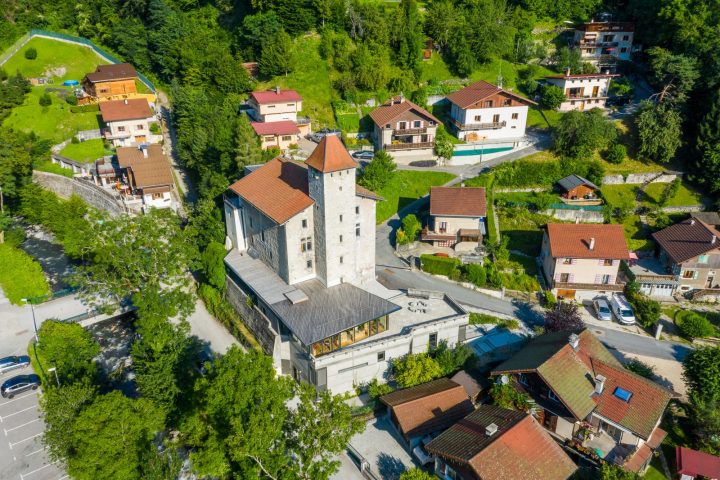After two years of massive works, the Château des Rubins has become the Observatoire des Alpes (Alps Observatory). All year round, a modern, fun and interactive exhibition is available for the whole family to visit on the theme of Mountains with a capital M.
Accommodation in the close vicinity
Types
- Museum
Capacity
- Minimum group size: 10
- Number of modular rooms: 1
Themes
- Sciences and technology
- Natural sciences
- Environment
- Ethnology
- Geology
- Natural history
- Minerals
- Restaurant in the close vicinity
- Free choice of caterer
Comforts
Languages spoken
- English
- French
Services
- Coach access
- Room hire
- Shop
- Wi-fi
- Tourist brochures
- Stroller-accessible
Furniture
- Lift
- Toilets
- Defibrillator
- Parking nearby
- Cloakroom
- Family Reception/drinks reception
- Seminar/meeting
- Video projector
- Screen
- Wifi in room
- Table
- Chair
- IT equipment
- Cloakroom
Accessibility
- Site, building totally accessible
Services provided
Activities
- needlework
- Archeological digs
- Jewellery
- Wood work
- Botanical
- Calligraphy
- Restoration sites
- Fauna - flora
- Gastronomy
- Geology
- Paintings graphic arts
- Binding and frames
- Sculpture
- Weaving
- Basketry
- Glassware
- Agricultural
- Bee-keeping
- Architecture
- Crafts
- Arts
- Plastic arts
- Discovery
- Environment
- Iron work
- Engraving
- History
- Regional products
- Health
- Tradition/folklore
- Cosmetics
- Water
- Gardening
- Creative hobbies
- Heritage
- Escape game
Visits
- Group visit duration: 90 min
- Group visit duration: 90 min
- Unguided group tours available permanently
- Languages information panels: English, French, Italian
Prices
From 01/01/2025 to 31/12/2026
| Price | Min. | Max. |
|---|---|---|
| Full price | 7,50€ | |
| Reduced price | 6,50€ | |
| Child | 6,50€ | |
| Large family | 23€ |
Means of payment
- Bank/credit card
- Check
- Cash
- Contactless payment
Opening
From 03/11 to 19/12/2025 closed daily.
Closed exceptionally on November 11th.
From 20/12/2025 to 04/01/2026 on Monday, Tuesday, Wednesday, Friday and Sunday between 10 am and 6 pm.
Closed exceptionally on January 1st and December 25th.
From 05/01 to 06/02/2026 on Wednesday, Thursday, Friday and Sunday between 10 am and 6 pm.
From 07/02 to 08/03/2026 on Monday, Tuesday, Wednesday, Thursday, Friday and Sunday between 10 am and 6 pm.
Complementary services
History, culture and heritage

